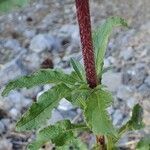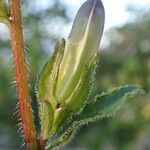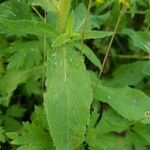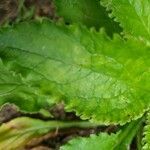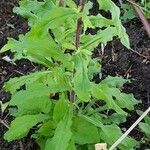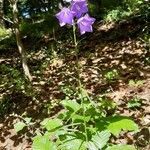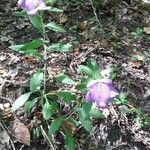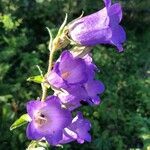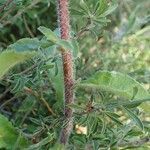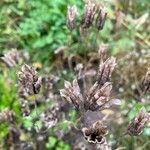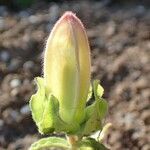Erect, taprooted biennial with stems to c. 1 m tall. Basal or rosette lvs to c. 30 cm long, with petiole to c. 1/2 length of lamina; lamina oblanceolate or oblong, gradually attenuate to base, crenate, hairy above and below or nearly glabrous above; cauline lvs becoming smaller towards infl.; middle cauline lvs 8-20 × 1-3 cm, oblong or lanceolate-oblong, crenate, sessile and amplexicaul. Infl. a long, terminal, racemose panicle; peduncles long, foliose, bracteate, hispid; pedicels short, densely hispid; bracteoles foliose, to c. 2.5 cm long. Calyx 1.5-2.8 cm long, deeply lobed, hispid, mainly on margins; lobes lanceolate; appendages 7-11 mm long, broad-ovate, deeply cordate at base, reflexed. Corolla 4-5 × 2-3.5 cm (larger in cultivated plants), tubular-campanulate, ventricose below, usually violet or purplish; lobes 5-10 mm long, ± triangular, reflexed. Stigmas 5. Capsule c. 2 cm long, 5-celled, ± broadly obovoid, dehiscing at base.
More
They grow over 2 years. They grow 45-90 cm high and spread 30 cm wide. The leaves occur in rings or rosettes. The leaves are sword shaped and have teeth. In the second year the plants send up slender stalks with spikes of bell shaped flowers. The flowers can be white, pink or purple. The flowers can be single or have a larger coloured cup around them.

